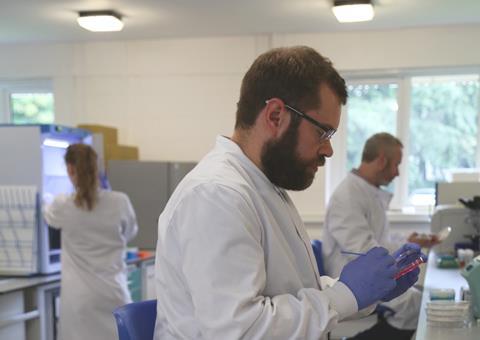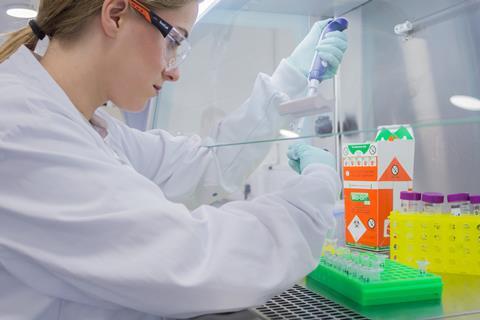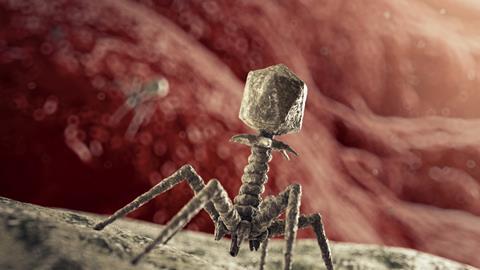Almost half a decade on from the start of the COVID-19 pandemic, another threat is on the horizon. Antimicrobial resistance (AMR), often called the “silent pandemic,” is steadily advancing and, if left unchecked, is projected to kill up to 10 million people each year by 2050. This growing crisis is not confined to human health; it affects animals and the environment and threatens to undermine decades of medical progress.
As antibiotics continue to lose their efficacy, it is widely agreed that the urgency to address AMR has reached a critical point. In response, One Health has emerged as a critical strategy, uniting veterinarians, healthcare professionals, environmental scientists, policymakers, and researchers in a coordinated effort to address the problem holistically. Together, these sectors are working to govern the responsible use and surveillance of antimicrobials, monitor the spread of resistant pathogens, and promote sustainable health practices.
In parallel, alternative treatments such as phage therapy are gaining momentum as a promising complementary solution – providing the opportunity to tackle infectious diseases without further compromising the delicate balance of the ecosystems we all depend on. With growing support for the integration of phages into AMR strategies, phage therapy stands out as an environmentally friendly, sustainable approach that aligns with the goals of the One Health framework.
The rising threat of AMR
AMR was directly linked to 1.27 million deaths in 2019 and contributed to nearly five million globally, according to the World Health Organization (WHO). Ranked among the top 10 global health threats, it is primarily driven by the misuse and overuse of antibiotics in humans, animals, and agriculture, resulting in drug-resistant ‘superbugs’ that weaken the efficacy of antimicrobial treatments.
In human health, these resistant pathogens can compromise life-saving procedures such as chemotherapy, organ transplants, and caesarean sections, making infections significantly harder to treat. Equally concerning is the impact on animal and plant health, posing a serious risk to farm productivity and food security.
The World Bank estimates healthcare costs of up to US$1 trillion by 2050 because of AMR, and the problem highlights a critical need for interventions that prioritise infection prevention, vaccination, reducing improper antibiotic use, and advancing research into new treatments.

The One Health approach
The One Health framework was developed in response to evidence of zoonotic disease transmission between species and a growing awareness of the interconnectedness of human, animal, and plant health – including climate change. The COVID-19 pandemic and more recent outbreaks, such as Mpox, have underscored the importance of an integrated health model, highlighting vulnerabilities that arise from fragmented systems.
By sharing data, monitoring trends, and advocating for responsible antimicrobial use across all sectors, this unified approach is designed to strengthen the global response to AMR, facilitate sustainable practices to curb the spread of resistant microbes, and protect public health.
One Health has already made significant strides in AMR management, with more than 100 countries developing individual action plans. Key initiatives, such as the WHO’s Global Action Plan on Antimicrobial Resistance, have driven the implementation of stewardship programs, with the launch of educational campaigns and the promotion of responsible antimicrobial use across sectors.
One Health is not just a reactive framework; it proactively combats AMR by advocating for sustainable practices, driving research,h and shaping policies that preserve the effectiveness of treatments for future generations. However, there is increasing recognition that greater efforts are needed to support low and middle-income countries in addressing AMR, alongside more investment in alternative treatments.

Phage therapy in One Health
Bacteriophages, or phages, are one such treatment. These naturally occurring viruses selectively target and destroy specific bacteria; unlike antibiotics, which can indiscriminately kill both harmful and beneficial bacteria, they offer a unique advantage in tackling AMR. Their high specificity ensures that only the hosts they are programmed to attack are affected, leaving beneficial microbes crucial to human, animal, and environmental health intact.
As the need for sustainable AMR solutions increases, phage therapy has gained recognition as a promising tool within the One Health framework. Effective in treating chronic and antibiotic-resistant infections, phage therapy holds potential across various sectors, including healthcare, agriculture, and livestock management. In agriculture, phages offer an eco-friendly approach to controlling bacterial infections, minimising the environmental impact, and promoting a healthier ecological balance.
The field of phage therapy has made significant advancements through continued research and innovation, particularly in compassionate-use cases for patients in need of life-saving treatments when conventional medicines have failed. With an established safety record, phage therapy has proven successful in treating diabetic foot ulcers; cystic fibrosis infections; eye, urinary tract, and surgical wound infections; staphylococcal lung infections, and neonatal sepsis. These breakthroughs have renewed interest in the treatment, positioning it as a viable and sustainable alternative to antibiotics in the move to address AMR.

Current challenges
While the specificity, potency, biocompatibility, and bactericidal activity of phages make them desirable therapeutic agents, several hurdles remain to their large-scale use, including production, formulation, and stability.
Widespread clinical adoption is limited by the need to take products through the clinical trials pathway, an expensive and time-consuming process. Furthermore, the limited availability of specialised Good Manufacturing Practice (GMP – the standard required for any licensed human medicine) compliant facilities stands in the way of the wider development of licenced phage products. While phages are inherently safe, their manufacturing processes must meet stringent safety standards to enable the production of treatments at a mass scale, with further investment needed to facilitate the exploitation of phages as licensed therapeutics.
However, in the last few years, substantial progress has been made in the clinical, regulatory, and manufacturing fields, and ongoing research is enhancing our understanding of phage biology. Work is currently underway to establish standardised protocols and quality standards for clinical and agricultural use. As efforts to expand infrastructure and investment continue, regulatory frameworks must also evolve to further support the safe, widespread implementation of phage therapy in line with One Health’s mission.

Conclusion
In the face of an escalating global health crisis, One Health demonstrates the power of collaborative, multidisciplinary action. By integrating human, animal, and environmental health strategies, it establishes a proactive framework to address AMR.
Phage therapy, with its targeted and sustainable approach, has emerged as a promising alternative to traditional antimicrobial treatments. Capable of destroying resistant bacteria while preserving beneficial microbes, it not only stands as a viable solution in human and animal health settings but also minimises the environmental impact associated with chemical antibiotics.
Although the journey toward widespread adoption of phage-based treatments is still in its early stages, the growing commitment to investment, research, and regulatory review marks a pivotal moment in progressing the field.
With increased resources directed toward advancing these therapies and building supportive regulatory frameworks, phage therapy can become an accessible, mainstream solution. These efforts not only aim to refine treatment efficacy and safety but also pave the way for sustainable, targeted antimicrobial options for generations to come.








No comments yet